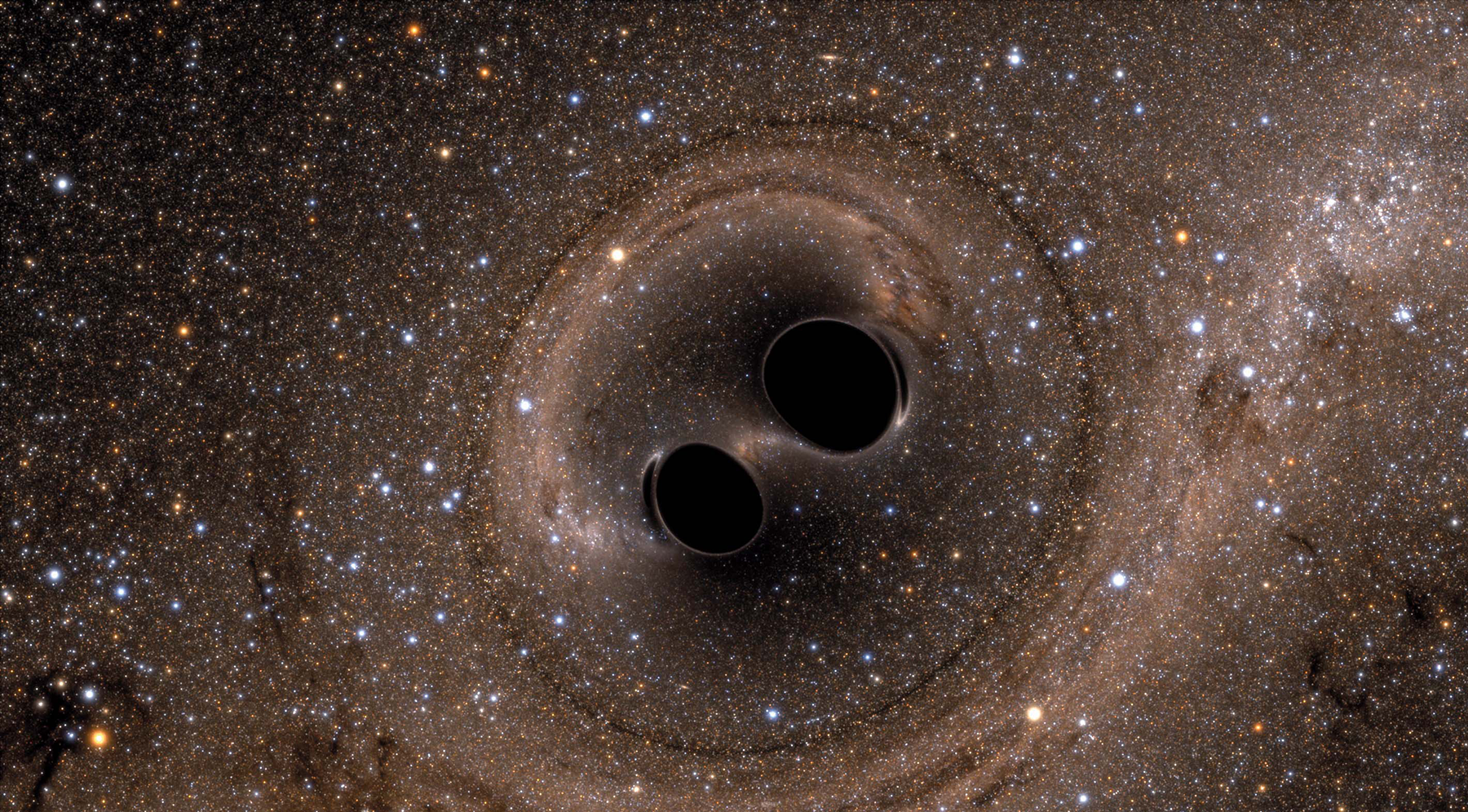Hidden Dimensions
String theory has predicted the existence of hidden dimensions, but scientists have yet to find them. However, new work from researchers at the Max Planck Institute for Gravitational Physics of the Albert Einstein Institute (AEI) indicates that hidden dimensions could have an influence on something that physicists can detect: gravitational waves. If this is true, studying those ripples in space-time might be the key that unlocks the mystery of hidden dimensions.
The study explores the consequences extra dimensions could have on gravitational waves, and offers predictions about whether or not we might be able to detect their effects. “Physicists have been looking for extra dimensions at the Large Hadron Collider at CERN but up to now this search has yielded no results,” second author of the study Dr. Gustavo Lucena Gómez said in a press release. “But gravitational wave detectors might be able to provide experimental evidence.”
The hunt for extra dimensions is a consuming one because of what is at stake. Tiny dimensions that are hidden due to their diminutive size are a core component of string theory, and among the most likely sources for a working theory of quantum gravity. Scientists have been pursuing a theory of quantum gravity because it would unify general relativity and quantum mechanics — a goal which continues to eluded physicists. That theory would be integral to our understanding of what happens inside black holes, how the Big Bang worked, and any other event that involves minuscule distance and huge masses.
LIGO And Gravitational Waves
Ever since LIGO first detected the gravitational waves emanating from a black-hole binary in September 2015, scientists have been looking for new ways to expand its use. LIGO has opened up a new area of astronomy, having detected stellar-mass black holes larger than 20 solar masses. LIGO has also given birth to LISA, the in-space manifestation of LIGO which will carry on the search for supermassive black holes and other phenomena.
The instant research clarifies a new role for LIGO's observations of gravitational waves: we can use the tool not only to locate black holes, but also to more thoroughly research and explain gravity itself. For example, the relative weak force of gravity may be the result of interactions with hidden dimensions. The team suspects that hidden dimensions, if they exist, would both modify “standard” gravitational waves and cause additional waves above 1,000 Hz. It seems unlikely that we could observe the latter phenomenon (not from Earth, anyway) but introducing more than one detector into the mix might improve our chances.
The team will test this possibility starting with the next set of observations, which will be made by both LIGO detectors and the Virgo detector beginning in late 2018. So, if you're feeling hopeful about an imminent discovery of quantum gravity, you're not alone. These ongoing efforts to expand what LIGO does and increase its reach and detection ability are taking place because scientists are confident about finding what they're looking for — and probably some surprises, too.
Share This Article
